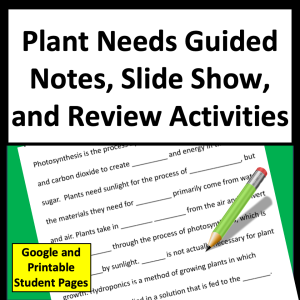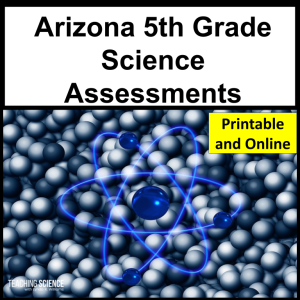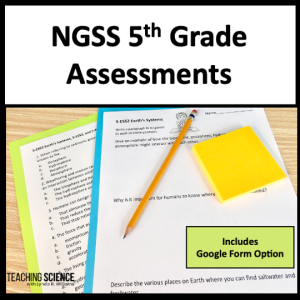Description
Looking for an engaging way to build data analysis and science explanation skills in your 5th graders? This set of 10 graph-based CER activities is the perfect way to help students practice making claims, using evidence from real data, and applying scientific reasoning, all while covering key 5th-grade physical science standards.
Students will analyze easy-to-read graphs on topics like motion, forces, matter, and energy, then use a structured format to complete their Claim–Evidence–Reasoning responses. Whether you’re teaching in-person or digitally, everything is ready to print or assign in Google Slides™ — no prep required.
✅ What’s Included:
Printable CER Worksheets (10 total – 1 per graph)
Detailed Lesson Plan
Google Slides™ Digital Version for each CER task
10 Physical Science Graphs on topics like:
Speed and motion
Conservation of mass
Chemical and physical changes
Friction and gravity
CER Graphic Organizer (student-friendly)
Projectable Slide Show of all graphs for whole-class discussion
Editable CER Rubric (1–4 scale or checklist format)
Editable CER Writing Poster to support students during writing
Alignment to 5th-grade Physical Science standards across NGSS, NC, UT, AZ, SC, OH, and more
Why Teachers Love It:
Promotes real science thinking with data-based reasoning
Saves hours of prep with both print + digital formats
Supports struggling writers with graphic organizers and rubrics
Give your students the tools they need to explain their thinking like real scientists and with real data and fundamental science skills.
Speed of Two Students During a Race
✅ NC: PS.5.2.2 (Motion: position, direction, speed)
✅ NGSS: 3-PS2-2 (Use data to describe the motion of an object)
✅ UT SEEd: 5.3.1 (Patterns of motion—direction and speed)
✅ SC: 5.P.2A.1 (Describe motion using position, direction, and speed)
✅ OH: 5.PS.1.a (Describe and measure motion)
✅ AZ: 5.P1U1.1 (Describe motion by speed and direction)
Mass Before and After Melting Ice
✅ NC: PS.5.1.1 (Weight before and after interaction)
✅ NGSS: 5-PS1-2 (Conservation of mass during phase change)
✅ UT SEEd: 5.2.1 (Matter is conserved during physical changes)
✅ SC: 5.P.2A.4 (Matter is conserved during phase changes)
✅ OH: Middle school–level treatment (conservation introduced early)
✅ AZ: 5.P1U1.2 (Matter is conserved through changes)
Evidence of New Substances When Mixing Materials
✅ NC: PS.5.1.2 (Does mixing create new substances?)
✅ NGSS: 5-PS1-4 (Evidence of chemical change)
✅ UT SEEd: 5.2.3 (Substances can react to form new substances)
✅ SC: 5.P.2B.4 (Mixing substances can result in physical or chemical changes)
✅ OH: Related to chemical change in middle grades
✅ AZ: 5.P1U1.3 (Chemical reactions and signs of change)
Temperature and Flexibility of Plastic Straws
✅ NC: PS.5.1.3 (Heating/cooling affects materials)
✅ NGSS: 5-PS1-3 (How materials react to heating and cooling)
✅ UT SEEd: 5.2.2 (Properties of materials can change with temperature)
✅ SC: 5.P.2A.3 (Properties of materials affected by heat)
✅ OH: Not emphasized in 5th grade
✅ AZ: 5.P1U1.2 (Physical properties change with conditions)
Distance Traveled on Different Surfaces
✅ NC: PS.5.2.1 (Friction and motion)
✅ NGSS: 3-PS2-2 (Friction and motion data collection)
✅ UT SEEd: 5.3.2 (Effects of forces like friction on motion)
✅ SC: 5.P.5A.2 (How friction affects motion)
✅ OH: P.F.4 (Investigate how surfaces affect motion—extended)
✅ AZ: 5.P1U1.1 (Motion affected by forces such as friction)
Drop Time of Objects with Different Masses
✅ NC: PS.5.2.1 (Gravity and mass effect on motion)
✅ NGSS: Closely related to 5-PS2-1 (Gravitational force effects)
✅ UT SEEd: 5.3.2 (Effects of gravity on falling objects)
✅ SC: 5.P.5A.3 (Gravitational effects on objects of different mass)
✅ OH: 5.PS.1.b (Speed of falling objects and mass)
✅ AZ: 5.P1U1.1 (Gravity affects motion equally)
Effect of Ramp Height on Car Speed
✅ NC: PS.5.2.2 (Use math and data to infer motion: speed, position, direction)
✅ NGSS: 3-PS2-2 (Use data to describe motion patterns)
✅ UT SEEd: 5.3.1 (Patterns of motion—position, direction, and speed)
✅ SC: 5.P.2A.1 (Describe motion using speed and direction)
✅ OH: 5.PS.1.a (Use evidence to describe and measure motion)
✅ AZ: 5.P1U1.1 (Motion described by speed and direction; effects of force)
Position of Two Runners Over Time
✅ NC: PS.5.2.2 (Describing motion through position and speed)
✅ NGSS: 3-PS2-2 (Motion data interpretation)
✅ UT SEEd: 5.3.1 (Changes in position and motion patterns)
✅ SC: 5.P.2A.1 (Describing motion of objects)
✅ OH: 5.PS.1.a (Use data to describe motion)
✅ AZ: 5.P1U1.1 (Motion in terms of position and time)
Effect of Gravity on Falling Objects
✅ NC: PS.5.2.1 (Explain how gravity affects the motion of objects)
✅ NGSS: 5-PS2-1 (Gravitational force exerted by Earth is directed down)
✅ UT SEEd: 5.3.2 (Investigate the effects of gravity on falling objects)
✅ SC: 5.P.5A.3 (Explain how gravity affects the motion of objects)
✅ OH: 5.PS.1.b (Forces like gravity affect speed and direction)
✅ AZ: 5.P1U1.1 (Model and describe motion due to gravity)
✅ IN/KY: NGSS-aligned (Matches 5-PS2-1 on gravity’s pull)


Check out my blog post on helping students master CER with graph based practice!









